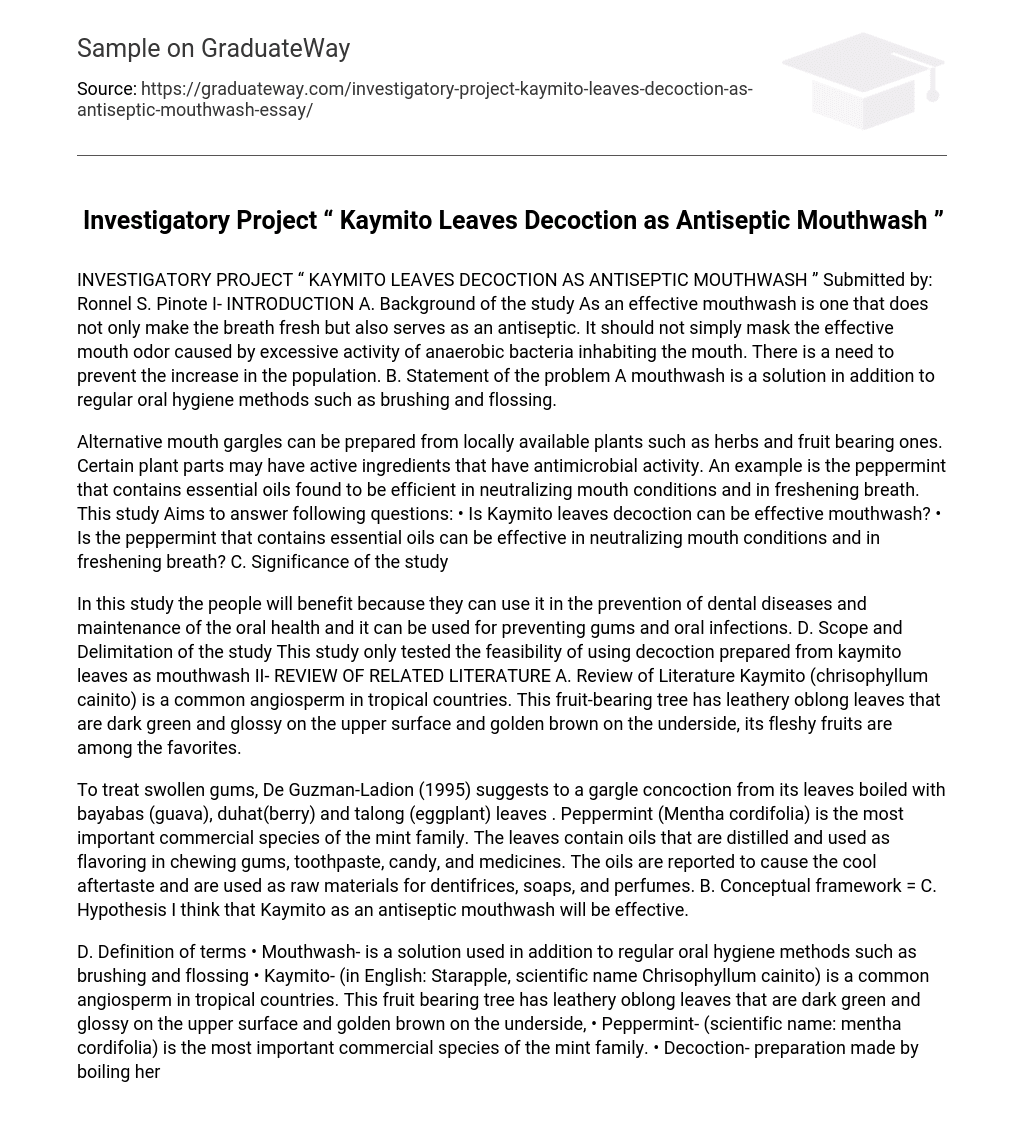INTRODUCTION
Background of the study As an effective mouthwash is one that does not only make the breath fresh but also serves as an antiseptic. It should not simply mask the effective mouth odor caused by excessive activity of anaerobic bacteria inhabiting the mouth. There is a need to prevent the increase in the population. B. Statement of the problem A mouthwash is a solution in addition to regular oral hygiene methods such as brushing and flossing.
Alternative mouth gargles can be prepared from locally available plants such as herbs and fruit bearing ones. Certain plant parts may have active ingredients that have antimicrobial activity. An example is the peppermint that contains essential oils found to be efficient in neutralizing mouth conditions and in freshening breath. This study Aims to answer following questions:
- Is Kaymito leaves decoction can be effective mouthwash?
- Is the peppermint that contains essential oils can be effective in neutralizing mouth conditions and in freshening breath?
REVIEW OF RELATED LITERATURE
Review of Literature Kaymito (chrisophyllum cainito) is a common angiosperm in tropical countries. This fruit-bearing tree has leathery oblong leaves that are dark green and glossy on the upper surface and golden brown on the underside, its fleshy fruits are among the favorites.
To treat swollen gums, De Guzman-Ladion (1995) suggests to a gargle concoction from its leaves boiled with bayabas (guava), duhat(berry) and talong (eggplant) leaves . Peppermint (Mentha cordifolia) is the most important commercial species of the mint family. The leaves contain oils that are distilled and used as flavoring in chewing gums, toothpaste, candy, and medicines. The oils are reported to cause the cool aftertaste and are used as raw materials for dentifrices, soaps, and perfumes.
SUMMARY, CONCLUSIONS AND RECCOMENDATIONS
The study proved the efficacy of the decoction from the leaves of kaymito (star apple) as an antiseptic mouthwash. Two concentrations of the decoction were tested on the experimental group. The control groups, on the other hand, were applied with peppermint solution, a proven gargle, and distilled water. The antimicrobial property of the four treatments was tested on bacteria cultures.
The parameter used was the zone of inhibition promoted by each treatment. It was found out that the decoction prepared from five cups of kaymito leaves and five cups water showed significant inhibitory effect on the reproduction and colony formation of bacteria.
Based on the results gathered it was concluded that the decoction prepared from five cups of kaymito leaves boiled in five cups of water is as effective as the proven gargle made out of peppermint extract, therefore it can be used as an alternative mouthwash. The group recommends that the people will use mouthwash made from kaimito leaves.





